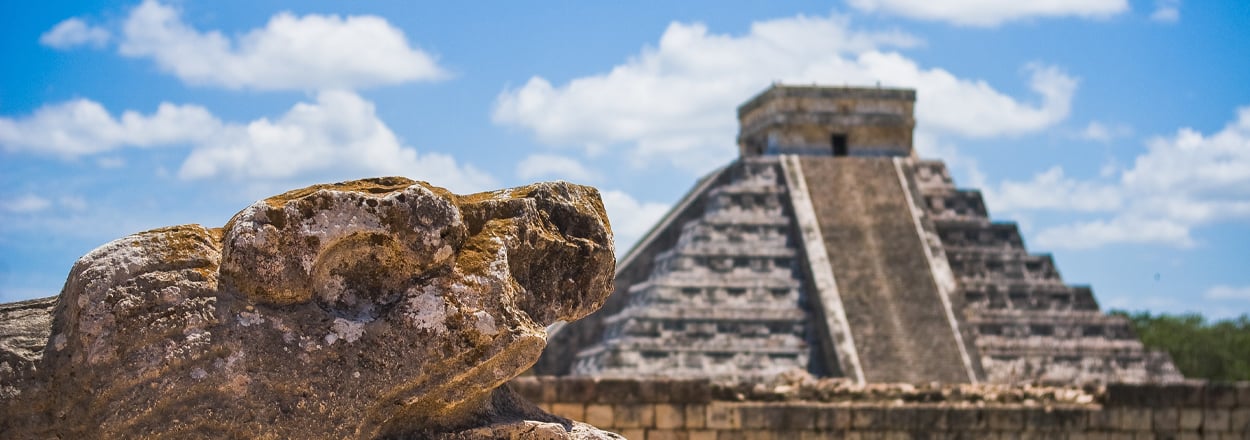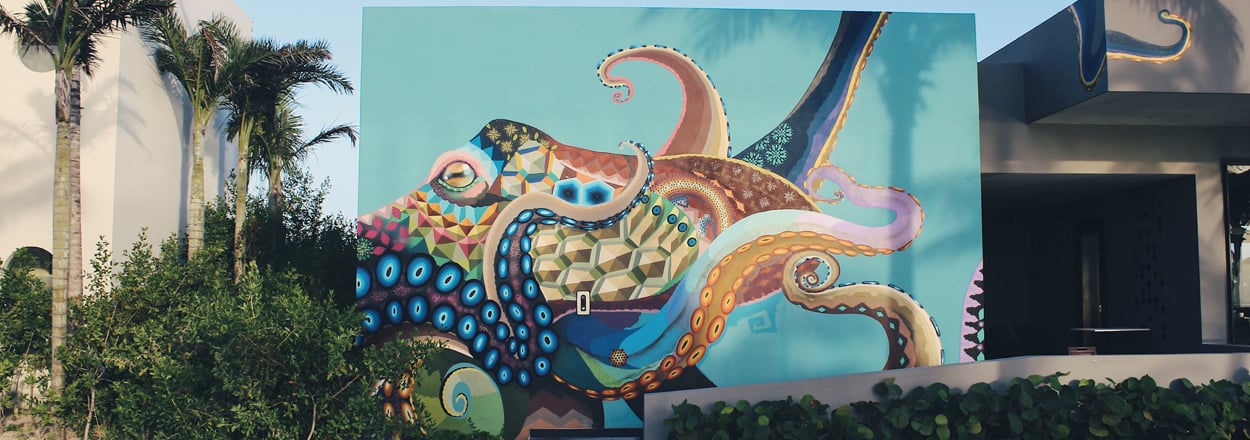Take a trip back in time during your next vacation with a visit to ancient Mexico. From awe-inspiring pyramids to elaborate ancient cities, Mexico is home to numerous well-restored Mesoamerican masterpieces.
Below you’ll find a few popular stops and hidden gems to help you explore the region’s archeological wonders.
Monte Albán
Dating back to 8th century, BCE, Monte Albán is a historic site located in the state of Oaxaca. A series of underground passageways, lopped pyramids, impressive plazas, and nearly 170 tombs make Monte Albán the most significant archeological site in the region and one of the most elaborate uncovered ancient ruins in all of the Americas.
View this post on Instagram
Monte Albán is strategically situated on a low mountain range where the combination of high ground, mighty canals, and man-made dams allowed the site to act as a hospitable home to Olmecs, Zapotecs, and Mixtecs for nearly 1,500 years. What’s more, Monte Albán is a stunning example of sacred topography as each terrace, dam, canal, pyramid, and artificial mound is carved directly from the mountain.
Today, Monte Albán is a UNESCO World Heritage site that is open to the public under an improved tourism plan to help protect the area’s vulnerable remains.
Bonampak
Hidden deep in the Lacandon Jungle, Bonampak is an ancient Mayan city most famous for its colorful murals. Featuring floor-to-ceiling scenes of ritual life, war practices, and political happenings, Bonampak’s impressive murals offer a unique glimpse into ancient Maya times. In fact, many historians credit the paintings for their help in debunking the prevalent myth that the ancient Maya were mild and peace-loving people.
View this post on Instagram
Additionally, the Bonampak murals provide information about the role of music in accordance with processions and other ancient rituals. A few images of early instruments include examples of log drums, rattles made from gourds and turtle shells, and scrapers made from a variety of materials.
Bonampak is open to visitors seven days a week. However, due to the site’s remote nature, it is best visited as part of an organized tour.
Chichen Itza
Dubbed one of the New 7 Wonders of the World, Chichen Itza is perhaps the most well-known, if not the most photographed, of the Mesoamerican ruins. What’s more, due to its close proximity to popular tourist destinations such as Cancun, Riviera Maya, and Tulum, Chichen Itza is only a quick day trip away.
View this post on Instagram
Visitors to this historic site can marvel at impressive structures like the Great Ball Court, the Temple of Warriors, El Caracol, the Temple of Xtoloc, the Sacred Cenote, and more. However, the area’s most popular attraction is El Castillio, also known as the Temple of Kukulcán, a Mesoamerican step-pyramid that dates back over 1,000 years. Interestingly, Chichen Itza acted as home to Mayan people from all areas of the Yucatán Peninsula as is evidenced in the wide variety of architectural styles throughout the historical site.
Today, visiting Chichen Itza is easier than ever as travelers can quickly book a guided tour through their resort, a travel advisor, or online.
Mitla
Different in appearance from other Mexican ruins, Mitla was established in 600BC and acted as a Zapotec, and later Mixtec, religious center. The space was almost entirely inhabited by priests who spent much of their time practicing human sacrifices. An offering to the gods, live organs were removed and placed into a firepit in hopes that it would bring good fortune.
View this post on Instagram
In addition to its gory past, Milta is also recognized for its elaborate design choices. Namely, the tiny pieces of stone that were cut, painted and placed into stunning geometric mosaics. There are 14 mosaics in total each of which tells its own story of heaven and earth. Similarly, many buildings onsite feature abstract carvings of people and animals shown in the same geometric style.
Yaxchilan
Worn from centuries of erosion and flooding, the buildings of Yaxchilan have suffered since their heyday in 320 CE. However, the historical site remains an important part of Yucatán history as a once-bustling trade port with unique archeological findings.
View this post on Instagram
Situated on the banks of the Usumacinta River, Yaxchilan consists of three complexes - the Great Plaza, the Grand Acropolis, and the Small Acropolis. Yaxchilan features a total of 120 structures many of which are elaborately decorated with stucco carvings and mural paintings. Evidence of a bridge or a toll gate exists in a pile of rubble referred to as the Bridge of Yaxchilan. It’s believed that this bridge was used to help aid locals across the river when the water was high and to welcome those coming to trade copal resin and dyes made from Brazilwood.
Many of the surviving buildings are in the Petén style, an architectural style found in other Mexican historical sites like Tikal and Palenque. One of the site’s most notable buildings is Structure 33, a dramatic construction meant to praise Yaxchilian ruler Bird-Jaguar. Structure 33 features a dual-platform flanked by staircases and carved stalactites which are meant to symbolize a sacred cave.
Ek’ Balam
One of the Yucatán’s only pyramids that you can climb, Ek’ Balam is a great place to get an up-close and personal feel for Mexico’s historic past. What’s more, just 32 miles Northeast of Chichen Itza, Ek’ Balam is another convenient pitstop for travelers vacationing in Cancun and Riviera Maya. Similar to Yaxchilan, Ek’ Balam was designed in the Petén architectural style. However, what makes Ek’ Balam unique are the two large defense walls that surround the interior city.
View this post on Instagram
Interestingly, the true size of Ek’ Balam remains unknown, the site is believed to total around 7 square miles, but only one square mile has been restored. Archeologists have mapped a total of 45 structures including a handful of temples, two palaces, and El Torre, a large pyramid at the center of the city. Different from other Mesoamerican ruins, Ek Balam’s building facades are not carved from stone. Instead, builders used limestone mortar and stucco which were then molded and painted.
Ek’ Balam is rising in popularity as a must-see excursion thanks to its artistic detail and close proximity to other local excursions.






comments